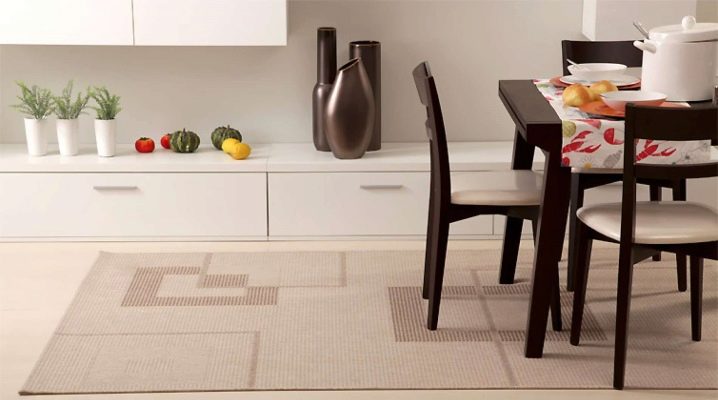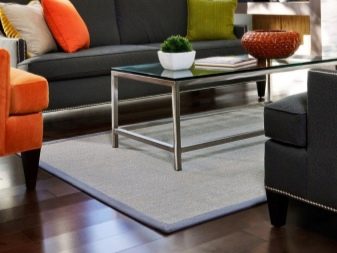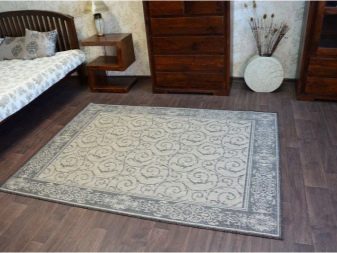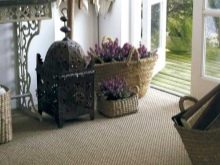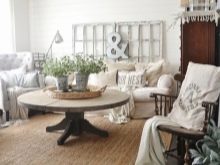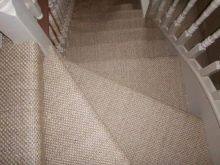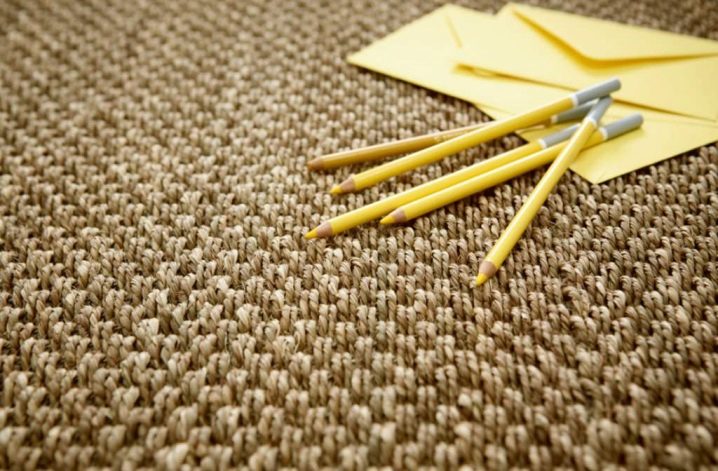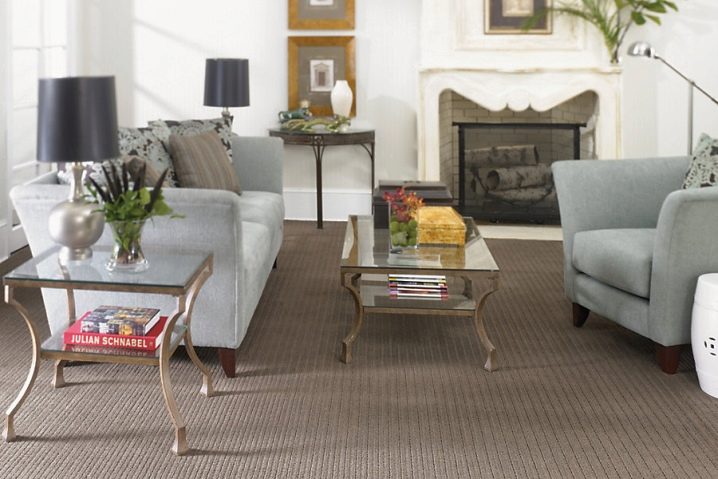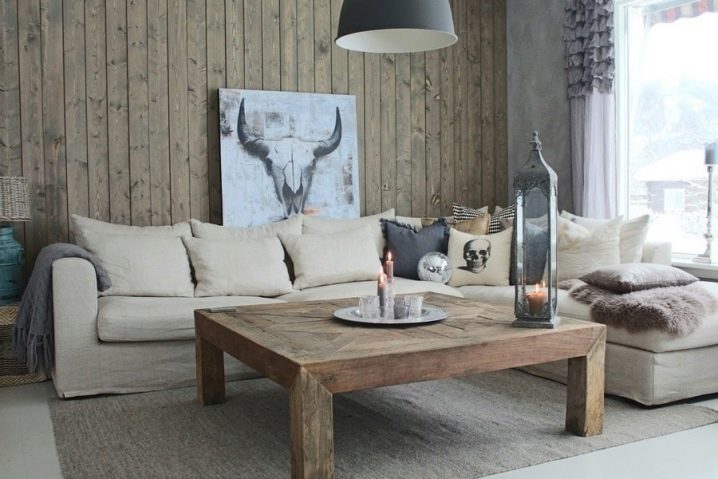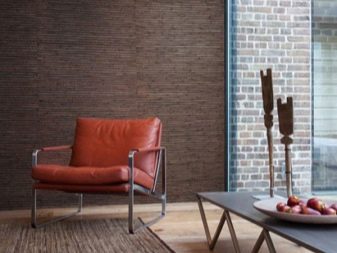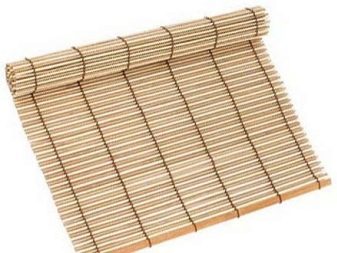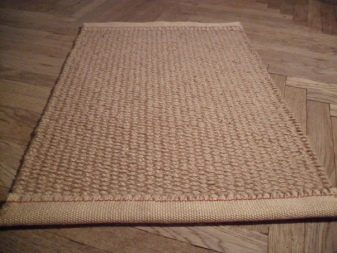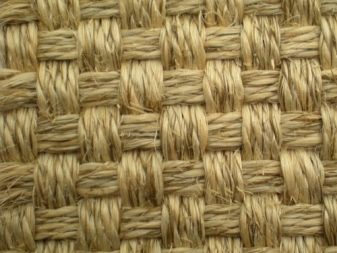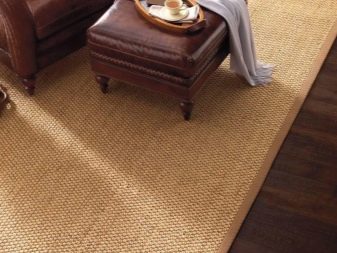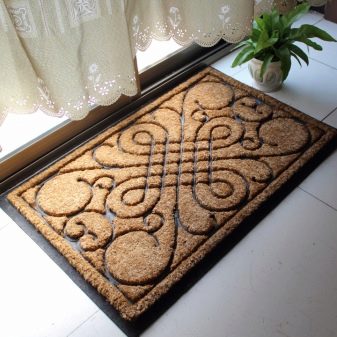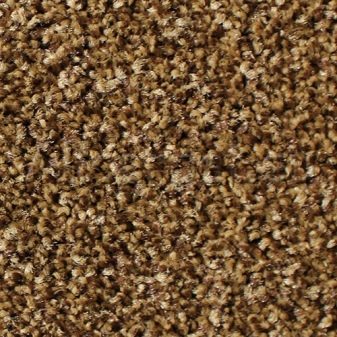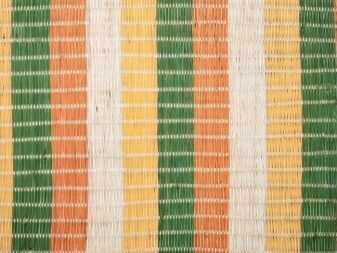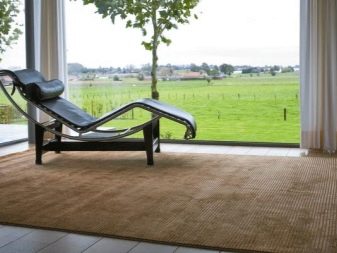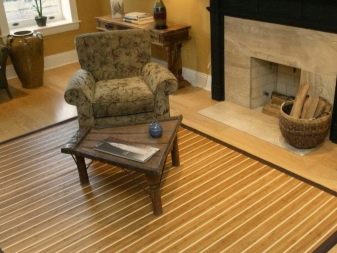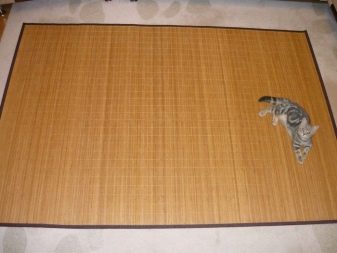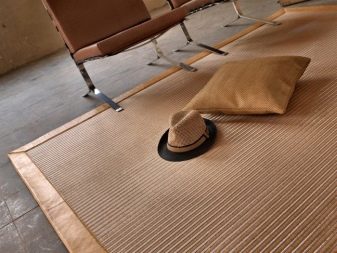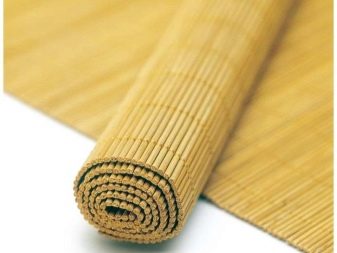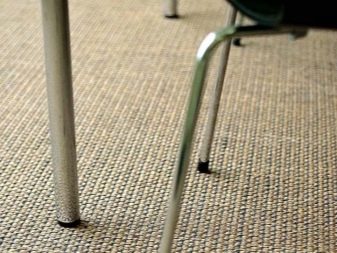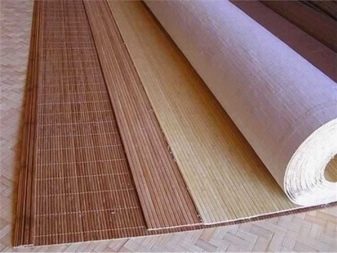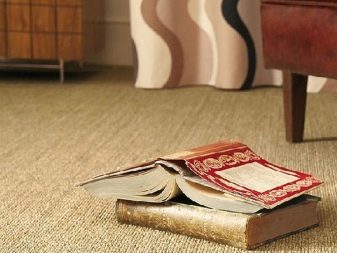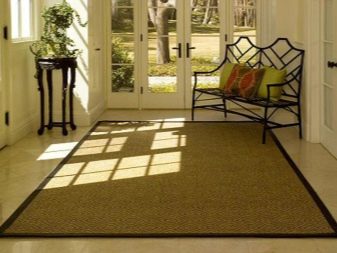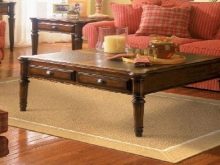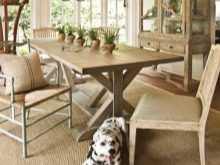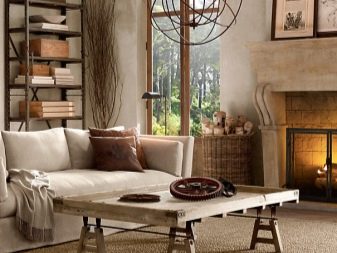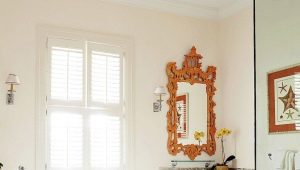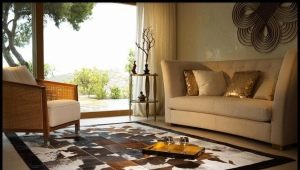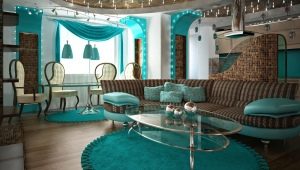Carpet mat
In times of rapid development of digital technologies, artificial materials and virtual reality, people are increasingly drawn to something truly natural. If a person is incredibly happy to assistants in the form of a computer and dishwasher, then furnishing his home, he will prefer natural and eco-friendly materials. One of the islands of nature in the apartment is a lint-free mat woven from plant fibers, known as a mat.
What it is?
The first mats were brought to Europe from China. The real homeland of an uncomplicated rug cannot be determined because they quickly (from a historical point of view) decompose, thus it is impossible to determine their presence by archaeological excavations among ancient peoples. However, no one will argue about the wide distribution of mats in countries with a hot climate and not only. For example, in Japan, still used one of the types of mats - outdoor wicker mats.The Japanese call them tatami.
Mats are distinguished by the natural eco-fiber from which they are made. They do not cause allergies, are not a habitat for dust mites, and are easy to clean. In addition, walking barefoot on a rough woven surface texture is comparable to a light foot massage, which has a positive effect on the body as a whole.
A mat is used not only as a carpet on the floor. It is used as wallpaper, curtains, paintings, and sometimes it covers the ceiling. Thanks to natural natural tones, it fits perfectly in both modern and classic interior.
The following advantages of woven lint-free carpets can be distinguished:
- Natural natural materials - the basis of the product.
- Hypoallergenic;
- Heat and sound insulation properties (depend on weaving - the tighter it is, the higher these properties).
- Practicality. Do not attract dust and unpretentious in cleaning.
- Pleasant to the touch, a positive effect on the body when walking on them barefoot.
- Various weaving techniques provide a wide selection.
Types and forms
Today, there are not only handmade rugs for sale, but also industrial production.The latter prevail in the market by the number of offers. Also on sale were mats not only from vegetable, but also from artificial synthetic materials. Such products are not afraid of moisture, more wear-resistant, which makes them suitable for use in the bathroom, as well as in open areas, for example, on the veranda.
Various weaving techniques are used to create mats, the most common of which are checkerboard weaving, pigtails. There is also a combination of several weaving techniques in one product. After weaving material prepared for sale, is a roll, the width of which lies in the range from 3.5 to 4 meters. As a result, the buyer has the opportunity to order a round or square mat, a small rug or a huge carpet.
Typically, firms offer to create Kant themselvesSome of them offer different materials - leather, tapestry, suede, cotton. It should be noted that the creation of a curb is often not included in the price of the mat and is paid separately. The cost of this procedure can range from 10 to 50% of the cost of the mat, depending on the material of the border and the complexity of its execution.
Manufacturing materials
The main part of the mats on the market is made from plant fibers.As in ancient times, they are made from the trunks of plants, woven together and dried well, trying to create a thin rope or thread from different lengths, thicknesses and shapes of fibers. It is from such threads that the carpet is woven later. Such materials as jute, reed, sisal became the most popular. Many other plants are used as a base, but they are less common.
Cane
A perennial herbaceous plant grows on the banks of rivers, swamps, for which many mistakenly call it reed. Since ancient times, it has been used by man to create wicker products. Reed mats have excellent thermal insulation properties.
Jute
The plant is a kind of shrubs belongs to the spinning culture. Traditionally, bags and ropes were made of jute. Now jute is actively used in the production of packages and packages as an alternative to synthetic materials. In addition, jute is characterized by high endurance and durability, which explains its use in crowded places - offices, shops.
Sisal
Sisal or agave sisal - a plant from which fibers make ropes, twine, tare fabrics.The threads are quite long and strong, which allows you to weave a mat of whole threads. Such products are considered the best among similar.
Coira
The fiber obtained from the inter-fruit of coconut nuts. Coconut is soaked in water for a long time, then fibers are combed out of it. Those that are longer than 20 cm and go to the manufacture of mats, mats, ropes and ropes. The shorter ones are used as a bristle or brush bristle.
Pic
The famous annual plant of the family of cereals. Rice straw enjoys such advantages over other types of plant fibers as softness and subtlety. Rice fibers are also different in that they are dried in the finished product. Sun-dried rice straw mats have the flexibility and durability, and also emit a pleasant aroma.
Rattan
A plant from the palm family. Rattan fiber is perhaps the only plant fiber that does not ignite. Its advantages are also resistance to high humidity and temperature changes. A large selection of shades of rattan mats makes them a favorite of designers.
Bamboo
The perennial plant grows in areas with high humidity, but due to its special properties it is not subject to rotting and infections. Bamboo mats are made in two ways. The first traditional - weaving. Second, more modern involves the use of bamboo straps held together by threads. It is worth noting that such carpets have less strength than wicker, so they are not suitable for rooms with heavy traffic.
Cotton
Natural and very common material. It is used as a base that protects the mats from deformation. Also found when machining the edge as a border material.
Paper
For the manufacture of carpets used paper from rice and cotton. It is worth noting that in all countries except Japan, a carpet is called paper if it contains at least one third of the paper. Such mats are not afraid of water and have high strength and wear resistance, but their main drawback is the high cost.
Linen
Flax fibers are widely used in the textile industry. Pure flax mats are short-lived, but very beautiful, so they almost do not produce.However, there are carpets with flax inserts on sale.
Hemp
Hemp - the so-called fiber derived from hemp. From it make ropes, rope, burlap. A special feature of hemp is its resistance to seawater, thanks to which it has found application in marine business. For the manufacture of mats hemp from time immemorial is used in view of the high strength characteristics.
Seaweed
Algae mats are not as widely known as bamboo mats, but they also have their merits. They are thin and flexible, and the algae fibers give the product an unusual green color; they can also be traditional beige or brown. Like rice wicker carpets, algae carpets have their own special smell - the smell of sea salt.
Application in the interior
The mat will easily emphasize the austerity and naturalness of the interior, but in modern design it is also used as the main element of the decor. Very much depends on its size. So, the rug of the small sizes will perfectly fit into the space in front of the fireplace, a bed or near the bed. Carpets of medium size - from 2 to 6 square meters are often used to highlight a specific area.They are suitable for the kitchen - they will highlight the dining room group, but make sure that the rear legs of the chairs are also on the carpet. Such rugs will come to the court and as a walkway in the hallway, here their practicality and ease of maintenance gains special value. Larger carpets are better to use in the living room, bedroom.
A distinctive feature of woven carpets is their invisibility when laying on the stairs. They are not deformed and do not allocate bends.
Mats are used not only as a floor covering. They are often hung on the wall, it is hung up - the upper edge is fixed on the wooden slats, and the lower one freely goes down. You can create beautiful compositions by changing the length of the hanging mats.
Fashionable painted mats are often hung in the living room as paintings. They resemble a kind of tapestry rugs.
It should be noted that woven rugs will not fit into every interior. For example, the style of luxury - baroque, obviously will not sustain such an attribute. Mats personify minimalism, east and nature, so they are perfect for seasoned styles, such as country or even modern high-tech.
Peculiarities of care
Before buying a mat, be sure to find out the composition of the purchased product, the rules of care and operating conditions. Depending on the raw materials used, they can differ dramatically. It should also be clarified whether the mat or the raw material used was specially treated to protect it from moisture and dirt. Such operations can significantly increase the service life, but at the same time they impose special requirements in care.
Jute, reed and coir are not polluted and do not absorb dirt and dust. Such carpets are perfect for crowded rooms in which it is not customary to take off shoes. In the care they are unpretentious, perfectly cleaned with a vacuum cleaner, but absolutely do not tolerate hot water. It vaporizes the fibers and may shrink the product after it dries completely. Water of ordinary jute temperature is not so terrible, and cleaning with a damp rag is even shown. There is a wide range of special cleaning products for products made from vegetable fiber on the basis of acetic acid.
Sisal, rice and hemp in high humidity conditions warp and acquire not only brown and green spots, but also a musty smell.When buying, pay attention to these signs - their presence indicates non-compliance with the storage mode, which significantly reduces the service life of the product. Mats from the listed materials should not be used in the kitchen. Spilled liquids will leave traces on these carpets.
Coconut fiber, treated with a special composition, allows you to make mats for use in rooms with high humidity and water, for example, in baths, swimming pools.
The average service life of woven carpets made from plant fibers is about 5 years. This figure is influenced not only by the operating conditions, but also by the raw materials from which the product is made. So, carpets from hemp, reed, coir will last about 7 years, and sisal carpet 5 years. The most short-lived are mats of rice and paper. Their lifespan is only 4 years, provided that they are handled correctly throughout their life.
To increase the service life, many manufacturers use a latex lining. When making a carpet, one of its sides is impregnated with latex. While freezing, it fixes the fibers and prevents them from spreading or unraveling.These mats are much more expensive, but they do not slip on the floor and even when injured retain their shape.
Manufacturers Reviews
The demand for woven carpets made from plant fiber in Russia is low compared to European countries, as a result of which there is a very poor choice on the market. Shops buy mats for rare buyers, so sellers can tell little about such an exotic product. Therefore, before purchasing it is necessary to learn more about the intended subject of purchase, to find out about the materials, conditions of use, the rules of cleaning and cleaning.
Remember that in the sales area often far from the entire range of products offered, also in many stores there is an opportunity to order a product according to individual characteristics.
On sale it is possible to meet mats of both European, western, and east producers. Numerous tourists who have been to Vietnam often talk about mats markets. It is noteworthy that all the goods presented there are made by hand. The traveler can see the whole process of creating live, ask questions to the masters, as they weave them right there, not far from the market.On sale we have a large number of Vietnamese mats, but among them you can rarely find a handmade product. In the case of special interest in the process of creating mats go to Vietnam.
If you don’t want to go anywhere, you should pay attention to the manufacturer, as the manufacturing and processing technology may differ, which has a strong effect on the quality and appearance of the product. For example, German mats are treated with a special technology, which makes them softer than others. Consider the most popular companies with offices in Russia.
- German company AstraAlso known as Ottogolzesohne, it offers flooring made from materials such as sisal, coir, and reed. Various weaving techniques are presented. The height of the loop is not less than 5 and not more than 10 mm. The color palette is presented in natural colors, however, there are also dyed fibers of black, blue and green colors. The company buys woven rolls with a width of 4 meters. Curbs are offered a variety of materials found suede, cotton, tapestry. It is worth noting that Astra is one of the few firms in Moscow that offers reed coverings.
- Jab is a famous German company. with history, has offices in America, Europe and Russia.Wicker carpets from coir, Rome and sisal are offered. There are also carpets from joint weaving, for example, sisal and rice, sisal and wool, or coir and sisal. Cotton mesh and latex base are a must-have attribute of Jab mats. Rarely, but there are carpets on a felt basis. Such carpets lose to traditional flexibility, but they greatly gain in density. The color range is varied - 22 colors. Weaving techniques are also used about 30 types. Leather, fabrics or a special cord made from plant fiber are used as the border material. The rice mats offered by the company are woven by hand, so their price is much higher than the floor coverings of other plant fibers.
- German group Ruckstuhl represents various wattled coconut and jute floor coverings. The pattern is created by different texture and color of the fibers. The complexity of the pattern affects the cost of the final product.
- Belgian company Tasibel manufactures carpets since 1923. In the manufacture of mats uses a variety of compositions aimed at improving the water repellency.Thanks to such processing, products made from very short-lived plant fibers, for example, rice, become comparable in performance with products made from sisal. The company offers mats from one type of fiber (sesal, coir, jute), and a combination of several types (sisal and wool, sisal and paper, rice and paper, rice and cotton). Normal borders - leather, suede, tapestry, various ribbons.
- Unlimited Creation is a kind of fashion house in the world of woven flooring. Each mat is individual or presented in very limited quantities. The leading European designers are working on the development of the product appearance. The country of origin is Belgium. Sisal, coir, paper, rice, reed, flax and cotton are used as vegetable fiber. The production of mats occurs only manually, thanks to which the company works on individual orders up to the customer-specified pattern. The color palette assumes the presence of a variety of colors and shades - the latest models were represented by bright pink and turquoise. Borders are also an object of art, as they are decorated with various cords, tassels, and embroidery.The price of such products is appropriate and depends not so much on the size, but on the appearance of the product, here weaving technique, complexity of dyeing, raw materials and the work of designers are taken into account.
- Swedish firm Ikea offers budget flooring options. On sale you can find little-known algae mats with jute edging, traditional sisal carpets, as well as round maize mats. All carpets are presented in bilateral form, they do not have a base of latex or impregnation. However, the company offers its solution in the form of latex sheaths that prevent slipping.
The mat will complement well any interior that emphasizes minimalism or the use of natural materials. In addition, it will make a slight shade of the east, its exotic and unique.
Things made from natural materials will help to create a pleasant atmosphere in the house, which contributes to rest and relaxation.
Details about the mats can be viewed in the next video.
